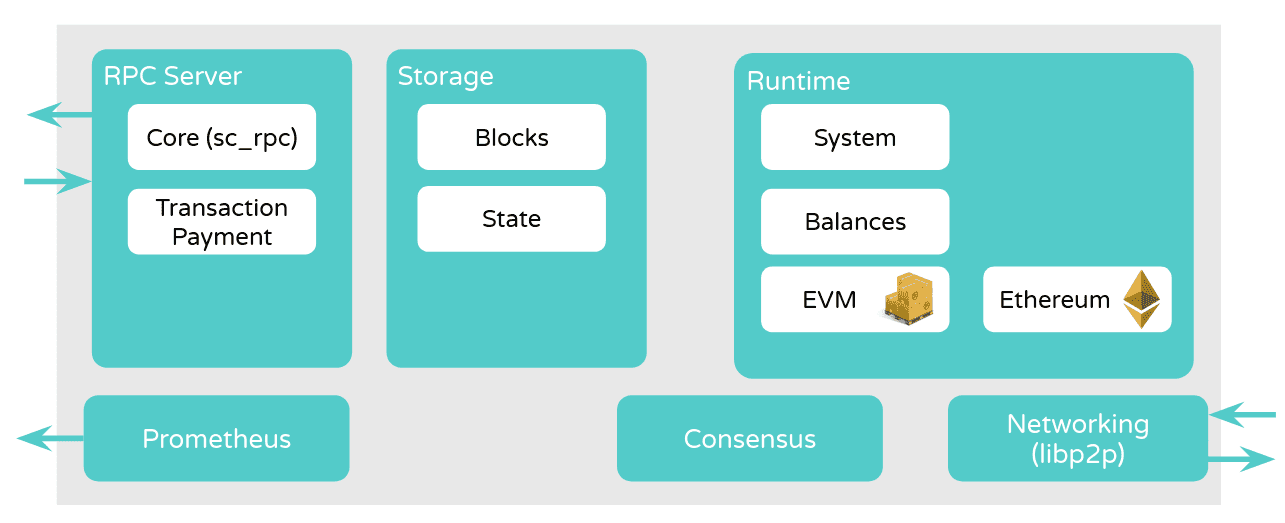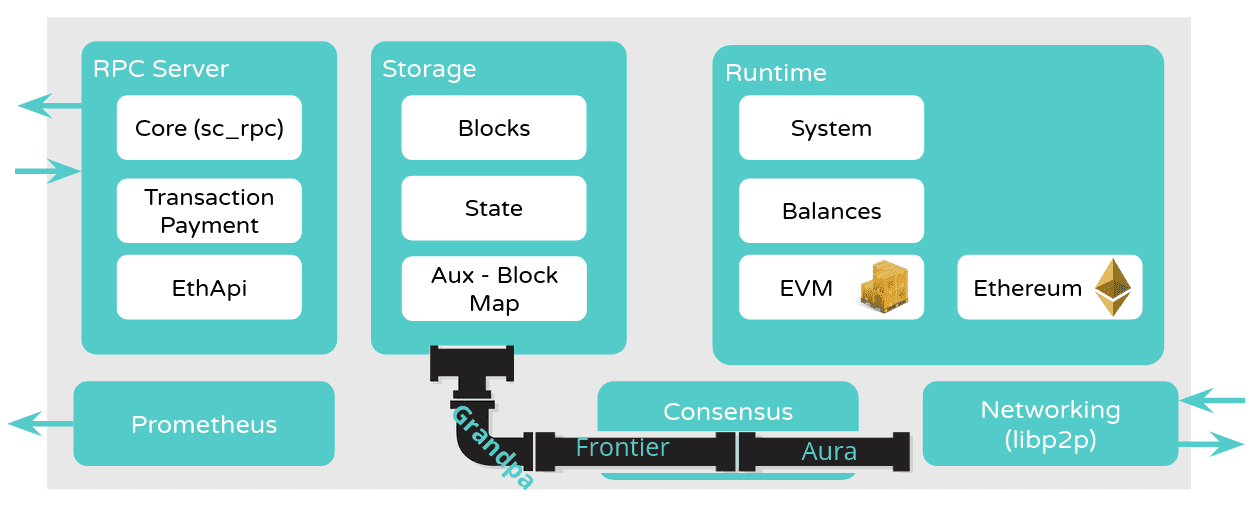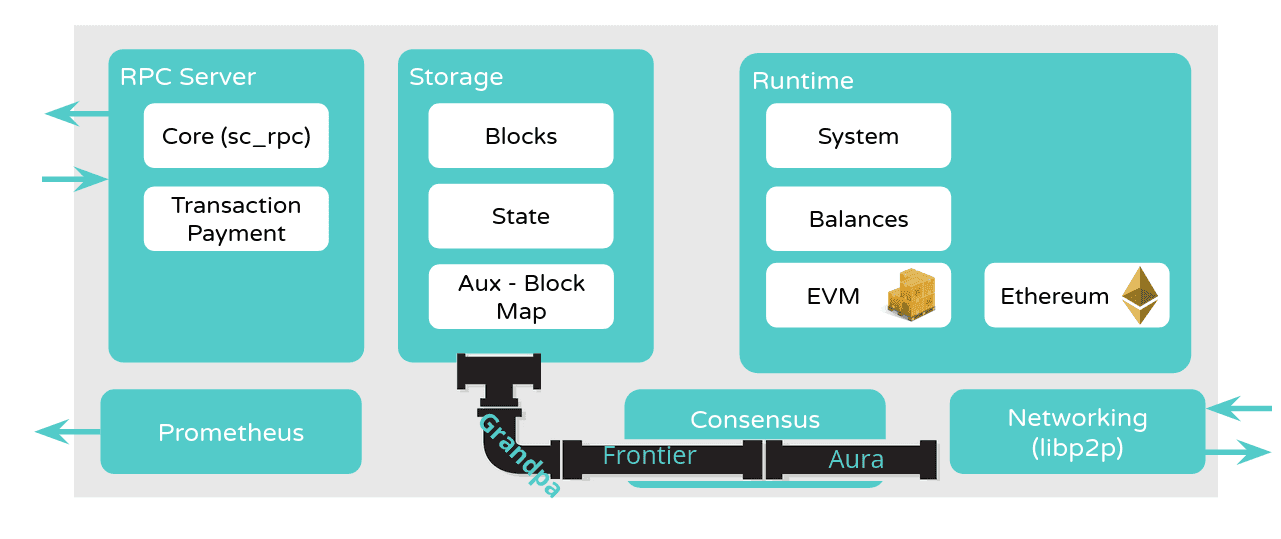Ethereum integration
By using crates from the Frontier project and adding the EVM and Ethereum pallets to your runtime, you can build a Substrate-based blockchain that supports Ethereum-based accounts and and allows for the execution of Solidity-based smart contracts.
The Ethereum Virtual Machine (EVM) is a virtual computer with the components that enable Ethereum network participants to store data and agree on the state of the data. For a Substrate-based blockchain, the core responsibilities of the EVM are implemented in the EVM pallet. The EVM pallet is responsible for executing Ethereum contract bytecode for smart contracts that are written in a high level language like Solidity, then compiled to EVM bytecode. The following diagram provides a simplified overview to illustrate how the EVM pallet and Ethereum RPC calls can be integrated into your Substrate runtime.

In addition to the EVM pallet, an Ethereum pallet is responsible for storing Ethereum-formatted blocks, transaction receipts, and transaction statuses.
When a user submits a raw Ethereum transaction, the transaction is first converted into a Substrate transaction by calling the transact function in the pallet_ethereum in the runtime.

Note that Ethereum accounts and Substrate accounts are not directly compatible for using a single private key. For information about mapping Ethereum accounts and keys to Substrate accounts and keys, see Unified Accounts in the Moonbeam documentation.
Ethereum-specific runtime APIs and RPCs
The runtime stores all of the Ethereum-formatted information that can be queried. You can call into the runtime and retrieve that information using the node RPC server and runtime API and RPC client calls.

Frontier block import

